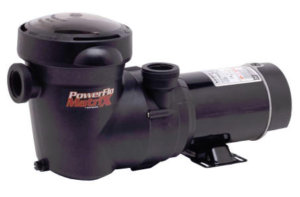FREE Standard Shipping On All Orders $100 or More!*
Top 3 Above Ground Pool Pump Problems

What's better than Top 5 pool pump problems? Top 3 pool pump problems, of course! With nearly 10 million pool pumps operating in the U.S., there's gonna be some problems, the fewer the better.
The workhorse of the equipment pad, pool pumps are built for "continuous duty" - 24 hours per day, at 3400 rpm. But this also makes them more prone to problems - and if you're not pumping, you're not filtering. That's bad.
Modern pool pump designs have created more efficient pumps, provide much higher flowrates at a lower horsepower. Pool pump troubleshooting methods, however - have not changed. Here's three typical swimming pool pump problem areas and solutions.
1. Pool pump Leaks
Pool Pumps can leak in two ways, they can leak air, or draw air into the pump basket, on the suction side of the pump and they can leak water on the pressure side of the pump. Anything before the impeller is considered the suction side, your pool water is under a vacuum, as it is pulled into the pump. After the impeller, the water is pushed under a pressure.
On the vacuum side of the impeller (In front of it) common pool pump air leak sources are:
- The threaded pvc fitting; the MTA or Male threaded adapter, is not tight or sealed properly or shrunk from heat.
- The drain plugs are loose or missing thread sealant, or in some pumps, o-rings.
- The pump lid is loose or cracked or the o-ring is dry rotted or cracked or needing lubricant like Magic Lube.
- The piping or valves in front of the pump (skimmer, main drain) are cracked, loose or o-rings are missing or bad.
On the pressure side of the impeller (after it) common pool pump water leak sources are:
- The threaded fitting, called the MTA or Male threaded adapter, is not tight or sealed or has shrunk from heat.
- The shaft seal is worn, loose or cracked, or on old brass pumps, the stub shaft o-ring is worn or missing.
- The volute or seal plate o-ring is loose, mis-aligned or needs lube and/or volute clamp or bolts are loose.
- The impeller housing or body is cracked, perhaps on the bottom, freeze damage or water hammer effect.
2. Pool Pump won't Start
- If the pump hums: Incorrect voltage (110v vs 220v) or bad capacitor, or jammed impeller.
- If the pump makes no noise: Bad breaker, no power, loose wire connections, bad switch or timeclock.
- If the pump starts but trips breaker: Bad breaker, loose wires, broken or touching wires, bad motor.
- If the pump runs, overheats and shuts off, turns back on again: Broken Fan, clogged vents, bad motor.
3. Pool Pump not pumping
- Air Leaks on suction side (see above).
- Clogged pump basket or skimmer baskets.
- Clogged pipes, valves before the pump, or clogged impeller.
- Dirty pool filter, clog, obstruction or closed valves after the pump.
- Broken impeller, missing diffuser or diffuser o-ring.
Pool Pump troubleshooting involves using your 5 senses. There are more pool pump problems that aren't mentioned here, but this covers most of them. Add below any questions or comments on this topic to add to the pump problem knowledgebase!